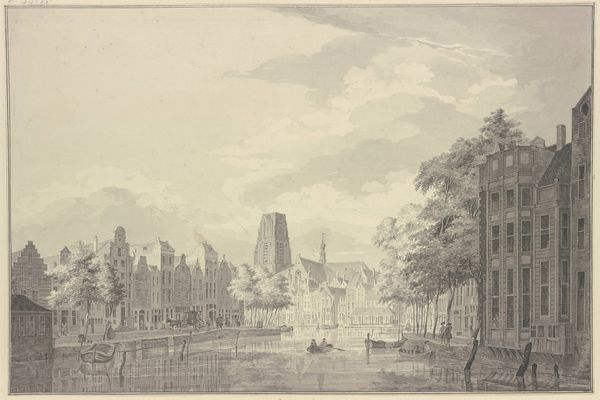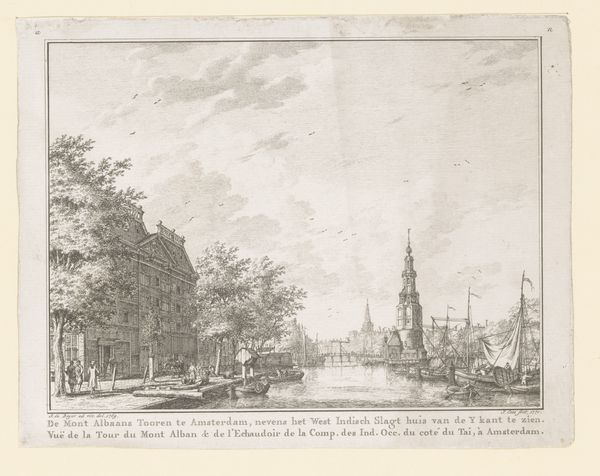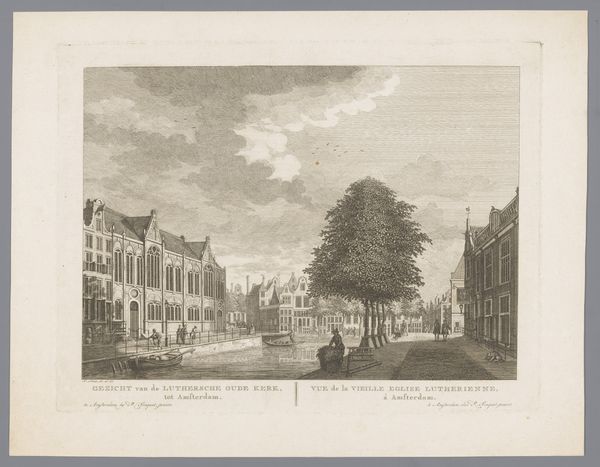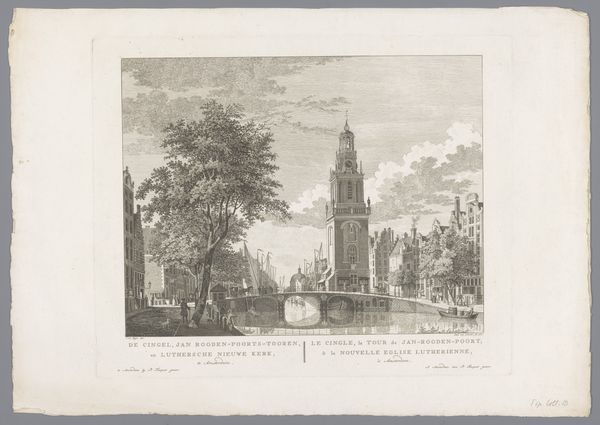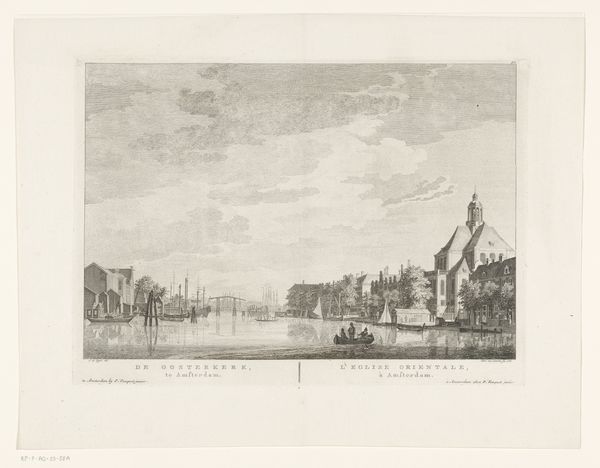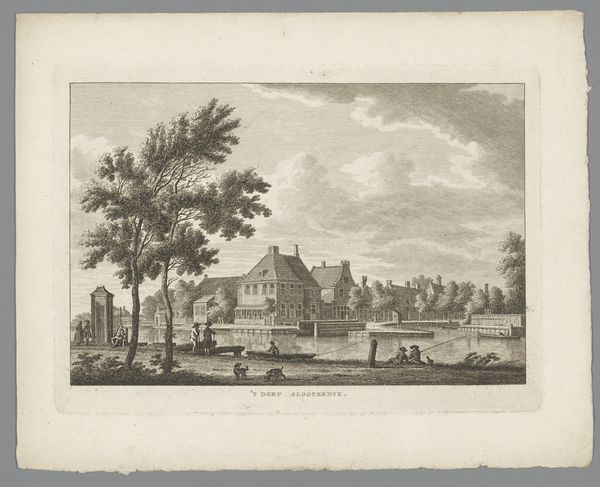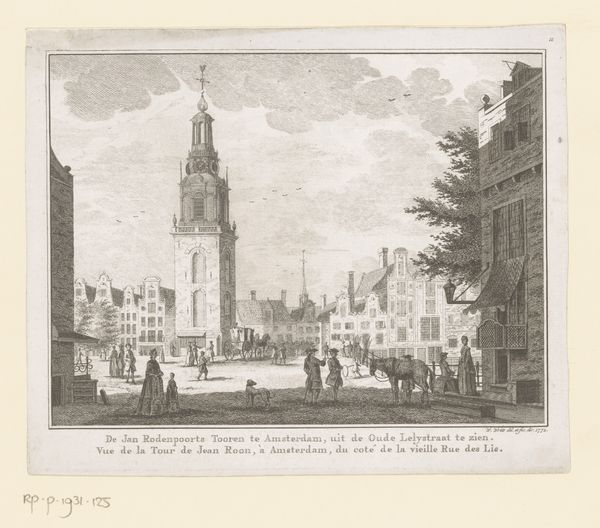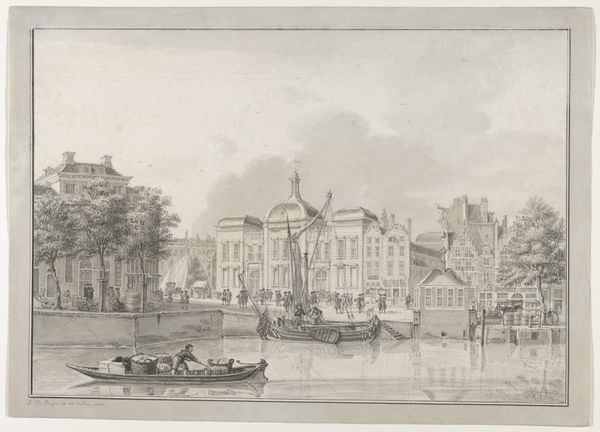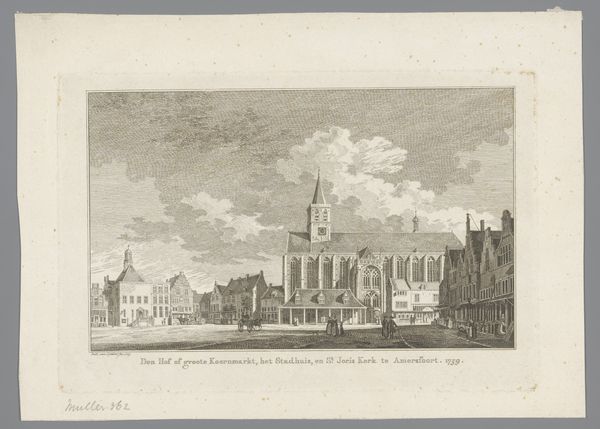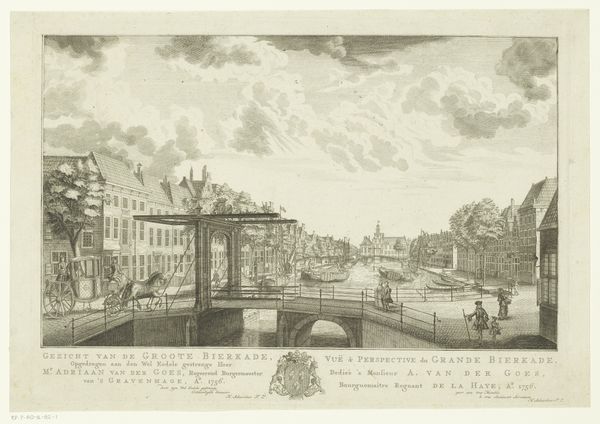
print, etching
#
baroque
#
dutch-golden-age
# print
#
etching
#
landscape
#
etching
#
cityscape
Dimensions: height 242 mm, width 349 mm
Copyright: Rijks Museum: Open Domain
Editor: This is "View of the Oudehaven in Rotterdam," an etching by Paulus van Liender from around 1760. It has a rather calm, almost idyllic feel, depicting everyday life alongside this impressive Dutch architecture. What do you see in this piece, especially regarding its context? Curator: It's tempting to view this as merely a pleasant cityscape. But let's think about the Dutch Golden Age context, even slightly faded by 1760. Consider Rotterdam's role as a bustling port city, instrumental in global trade, including the highly exploitative practices of the Dutch East India Company. Do you see hints of that wealth and power reflected in the architecture and bustling activity depicted? Editor: I guess I was focusing more on the charming details, like the figures along the quayside. But thinking about it now, that commerce funded the lifestyle displayed, right? How does van Liender's depiction reflect or perhaps obscure this relationship? Curator: Precisely. Consider the composition. The light catches the buildings, suggesting prosperity. The detail in rendering the architecture suggests civic pride, but it is rendered neutrally, if not positively. This kind of portrayal, while picturesque, arguably sanitizes the sources of Rotterdam's wealth and perhaps obscures the human cost involved in this burgeoning capitalism. Does it prompt you to consider the narratives that are included or excluded in this "view"? Editor: That's a good point. By focusing on the aesthetic, we may have glanced over how the etching reinforces certain power dynamics. I will try to analyze artworks with a critical view and focus on context moving forward. Curator: And by acknowledging that critical viewpoint, we make art history a relevant voice in understanding and reshaping our contemporary society. The dialogue itself becomes a form of activism.
Comments
No comments
Be the first to comment and join the conversation on the ultimate creative platform.
